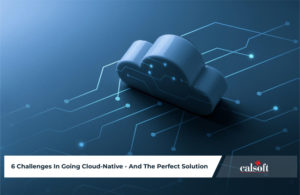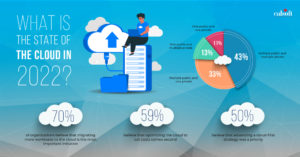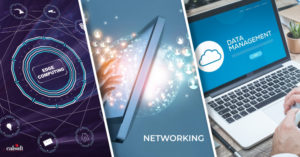Today’s competitive digital enterprise needs innovative technology to drive organizational agility, resilience, and powerful decision-making. The cloud has risen as a great enabler of modern enterprise.
Once seen merely as a cheap storage location, the cloud has now become central to almost all organizational aspects and transformation endeavors of large and small organizations alike. Almost all organizations are now aware of how they can create better value with the cloud and stay ahead of the competition.
Today, the cloud is a part of almost every organization’s vocabulary, especially as the public cloud becomes more secure and aligned to enterprise needs. Obviously, the rise of the public cloud has also impacted data center products.
Data center products have been around for quite some time now. These products were built considering the needs of the on-premises data center in mind. However, with the rise of the cloud, these data center products have had to work towards building synergies with the public cloud to ensure they keep delivering value to their enterprise customers.
The growing role of data in applications
New-age technologies such as AI are now rapidly becoming more mainstream. AI applications are data-intensive and demand faster data access more frequently along with robust data processing capabilities.
On-premises data center applications do not have the capabilities to be as nimble since the enterprise can only store and process a certain amount of data in the on-premises data center. The cloud is attractive as a solution to this challenge, as it helps enterprises expand their data capabilities by giving them more data storage and faster computational capabilities to drive real-time data-driven applications.
Complex, legacy application alert
Reducing the complexity of data center products and making them more flexible to integrate with, has become imperative to leverage the power of the cloud. Organizations can no longer afford to remain tethered to inflexible stacks that do not support automation. Mission-critical, complex, legacy applications that remain in data centers thus need an upgrade and have to be modernized to leverage the capabilities of the cloud.
ISVs, thus, must look at product modernization to add new capabilities into existing applications. This move entails product enhancement or migrating them from traditional architectures to current ones, re-platforming, re-engineering, re-coding, or replacing. It is also important to evaluate the effort required to further these initiatives and assess if the product should be retired.
Legacy application modernization is crucial to building synergies with the cloud to be able to fulfill business needs.
Application assessment for application remediation
As organizations chase agility, flexibility, and performance, assessing the capability of existing data center products becomes crucial as a first step to building synergies with the cloud. Conducting a gap analysis to identify whether the application should be renewed, refactored, or simply improved is where the journey begins.
This application assessment should include a review of the application architecture and identify specific components as part of this phase. Functional validation is another crucial step to track if all functionalities are up to scale. Finally, these application components need to be mapped to cloud-specific workflows to achieve efficient scale-out/scale-back of resources and be considered cloud-ready.
Consider application migration
Some data center applications need a little more work than application remediation to be suitable for the cloud. This usually happens in the case of legacy applications owing to their architecture and associated variables. When application remediation can’t modernize the application to the desired state, organizations have to consider application migration to a more standardized ecosystem.
In this situation, having a strong application migration plan is essential to ensure business continuity and productivity among enterprise customers. Along with re-hosting, re-architecting, and re-factoring applications, the migration plan has to also make considerations for migrating applications from traditional architecture to a microservices-based architecture.
Evaluating architectural elements and development approaches like containerization, cloud-native application development, and application integration with cloud platforms is crucial. Looking at application deployment, CI-CD pipelines, monitoring, intelligent analytics, UX/UI, etc. also become important aspects to consider during application migration.
Ecosystem integration is key
Consolidating legacy and new technology installations and processes into product plans are also key organizational imperatives to enable enterprise digital transformation initiatives. These consolidations are also essential to drive productivity by enabling easy automation of repetitive tasks. Building in the ability to integrate diverse systems and data sources also become important consideration points to help customers speed up time to market, improve efficiencies, and reduce costs.
To build synergy between the cloud and data center products, organizations also have to manage storage subsystems seamlessly for easy storage provisioning and to address tasks without having to switch between multiple management interfaces. For ISVs building data center products, this is an opportunity to create management interfaces to simplify the ecosystem. Developing customized plug-ins for hypervisors such as VMware, Microsoft, Linux, and Citrix enables management of these subsystems from a single UI, essentially becoming cogs in the wheel to drive ecosystem integration.
In a nutshell
IDC predicts that the global data sphere will stand at 175 zettabytes by 2025. To meet the demands of the data-driven world, ISVs have to evolve their data center products to work well with the public cloud. Developing synergies with the public cloud thus does not seem like an option anymore, but rather an imperative that will help ISVs gain that necessary competitive differentiation.
Talk to Cloud and Data Experts at Calsoft to get answers to your queries. You can also opt-in for our insightful piece of collateral that will land every month in your inbox with insights from across the industry.






